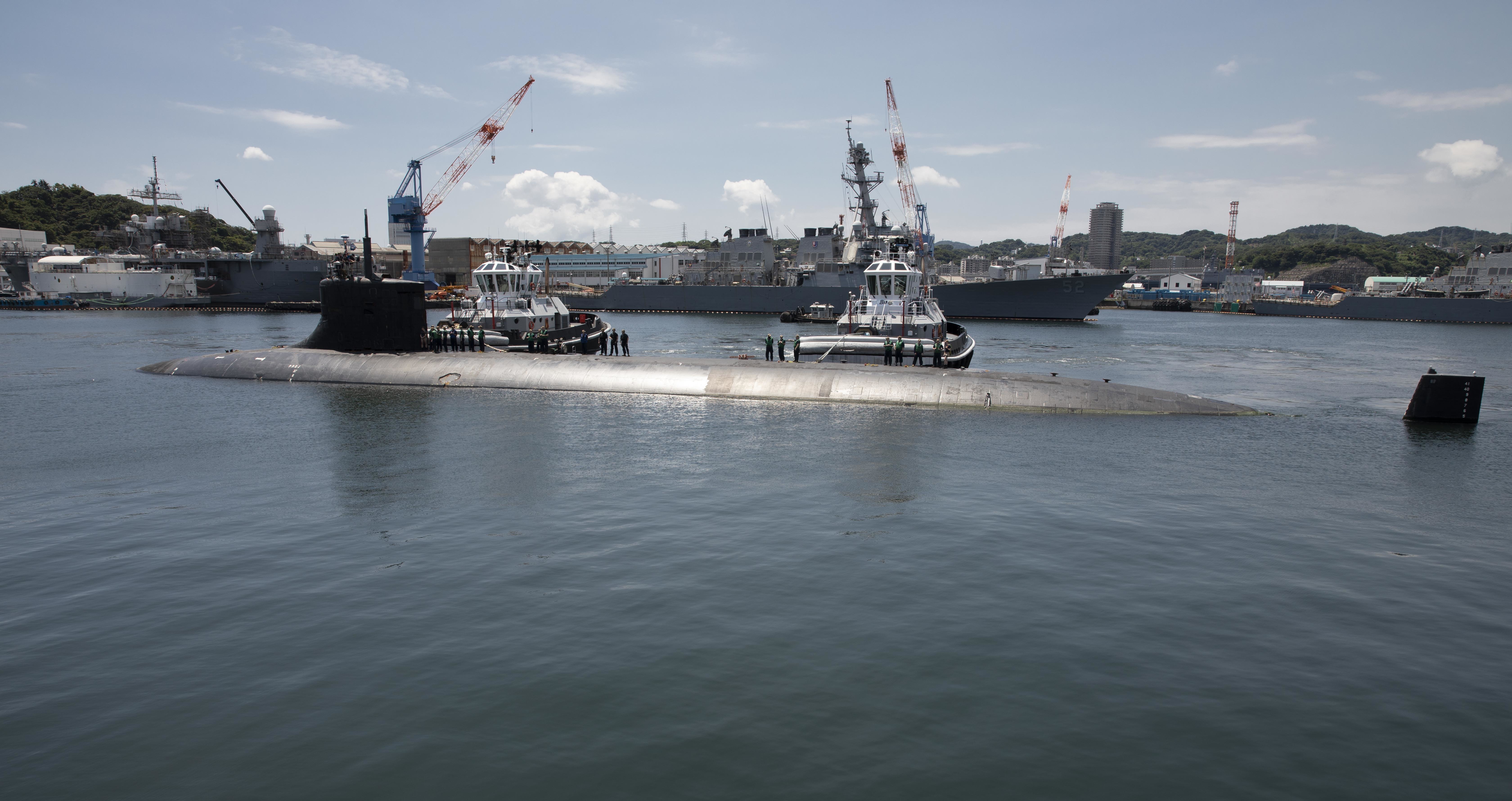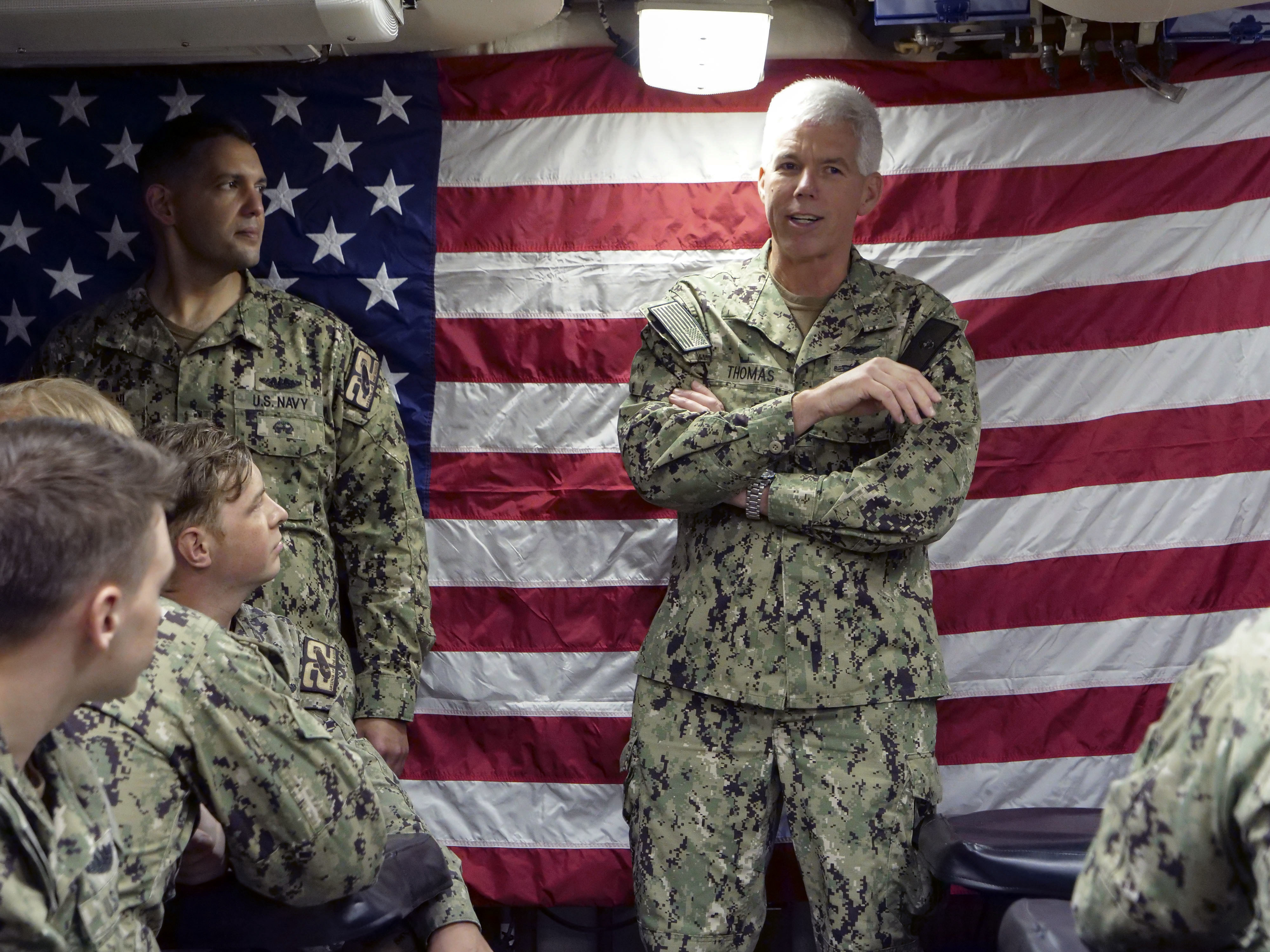
This post has been updated with a statement from U.S. 7th Fleet.
Investigators have determined USS Connecticut (SSN-22) hit an uncharted seamount that grounded the nuclear attack submarine on the underwater feature in the South China Sea Navy, USNI News has learned.
The results of the command investigation into the Oct. 2 incident, completed last week, have now been passed up to U.S. 7th Fleet commander Vice Adm. Karl Thomas for review and to determine if there will be any additional accountability actions over the incident, a legislative source and two defense officials that are familiar with the findings told USNI News on Monday.
“The investigation determined USS Connecticut grounded on an uncharted seamount while operating in international waters in the Indo-Pacific region,” 7th Fleet spokesperson Cmdr. Hayley Sims told USNI News in a Monday afternoon statement following an earlier version of this post. “Commander, U.S. 7th Fleet will determine whether follow-on actions, including accountability, are appropriate.”
The damage to the forward section of the submarine damaged its ballast tanks and prompted Connecticut to make a week-long voyage on the surface from the South China Sea to Guam, USNI News understands. The Navy has said repeatedly that the submarine’s nuclear reactor and propulsion system are undamaged.
The boat is in currently in Guam undergoing initial repairs overseen by Naval Sea Systems Command, personnel from the Puget Sound Naval Shipyard and submarine tender USS Emory S. Land (AS-39).

The Navy will first determine how the submarine can be fixed enough to safely leave Guam for follow-on repairs.
Determining where and when the final repairs would occur will further stress the service’s maintenance capability.
“If we ended up doing [the Connecticut work] in one of the public shipyards, that would certainly cause perturbations in all the other work in the shipyards,” Jay Stefany, acting assistant secretary of the Navy for research, development and acquisition, told the House Armed Services Committee readiness subcommittee on Thursday.
The damage and subsequent repairs to the attack submarine have caused renewed attention on the Navy’s attack submarine maintenance backlog.
In the same hearing, House Armed Services seapower and projection forces subcommittee chair Rep. Joe Courtney (D-Conn.) pointed out the lack of dry dock facilities for submarine repairs west of Hawaii.
“Right now, it’s in Guam, that’s public record, there is no dry dock in Guam, hopefully, a sub tender can do the work, but that remains to be seen,” he said. “It just shows how … the world gets a vote and things change and unexpected incidents create more demand for repairs. … The attack subs have always been the poor cousin in the public shipyards in terms of getting priority, but we know particularly a Seawolf-class submarine is extremely valuable in terms of the mission in that part of the world.”
Connecticut is one of three Sea Wolf-class attack nuclear boats that were developed for deep-water operations to take on Soviet submarines in the open ocean. Since the end of the Cold War, the trio has been upgraded and modified to carry out some of the Navy’s most sensitive missions.





